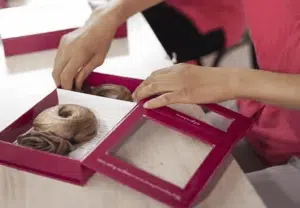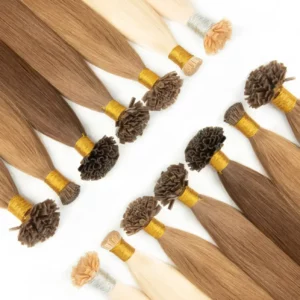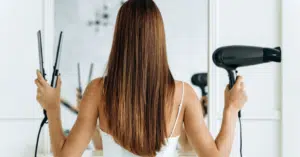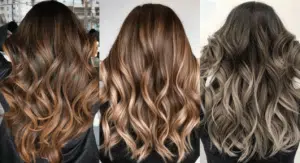Looking to customize your weft hair extensions without causing shedding or damage? Cutting wefts can unlock styling flexibility—but only when done correctly.
You can cut weft hair extensions, but the method depends on the type of weft. Some wefts like machine wefts, Genius wefts, and flat wefts can be trimmed safely. Others, like hand-tied wefts, should never be cut.Cutting extensions the wrong way may lead to shedding, fraying, or even full product failure. But done right, it allows you to tailor each install to your client’s needs.
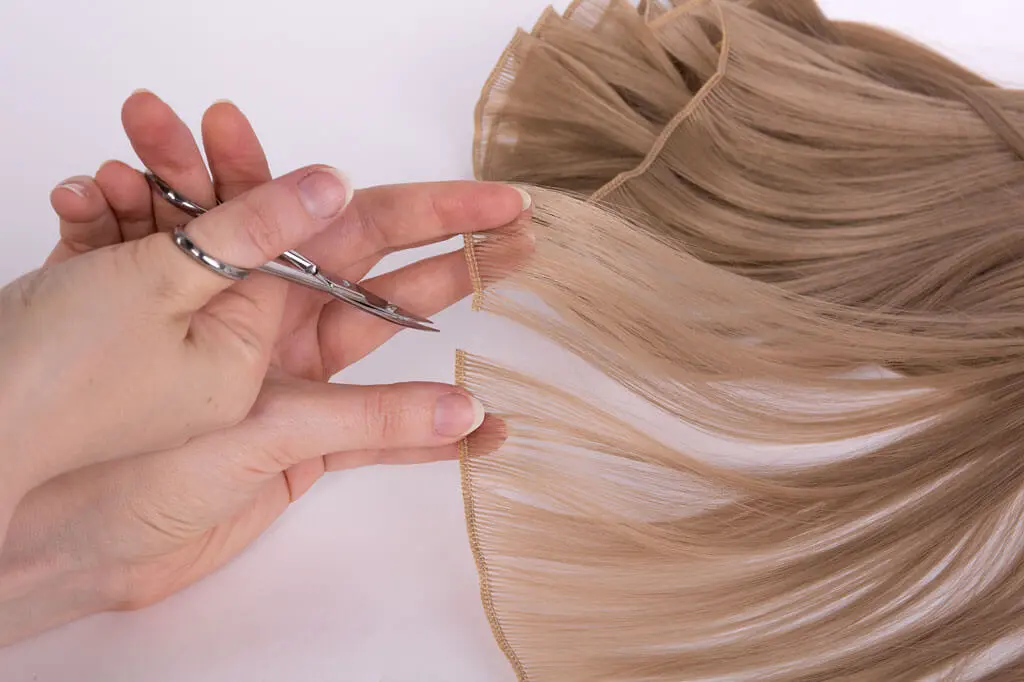
Can You Cut Weft Hair Extensions?
Stylists often wonder whether cutting weft extensions is safe. The short answer is: it depends on the weft type.
You can safely cut certain weft types like machine wefts, Genius wefts, and flat wefts—but not hand-tied wefts.
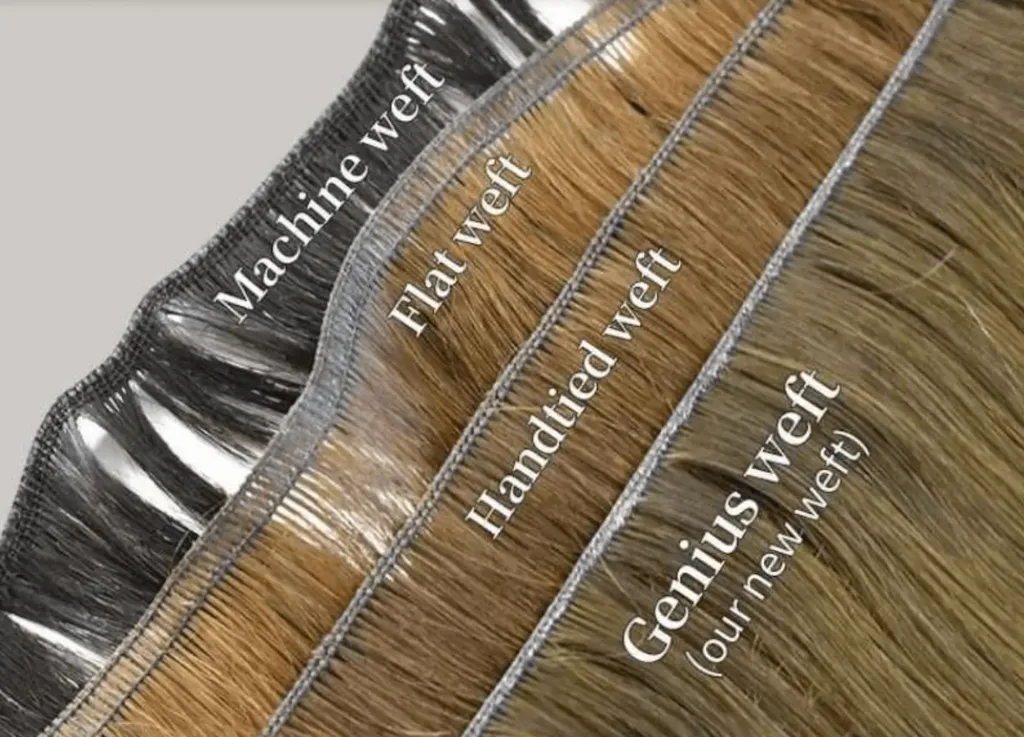
| Weft Type | Cuttable? | Notes |
|---|---|---|
| Machine Weft | Yes | Strong stitching resists shedding. |
| Hand-tied Weft | No | Will unravel. Never cut. |
| Genius Weft | Yes | Engineered to be trimmed freely. |
| Flat Weft | Yes | Pre-sealed edges. Safe to cut. |
| Volume Weft | Depends | Can be cut if layered with sealed seams. |
| Butterfly Weft | Yes | Holes spaced for easy installation, not cutting. |
| Invisible Tape Weft | No | Pre-taped, cutting will affect adhesive. |
The structure and sealing method of the weft determines whether trimming is safe. Always confirm the weft’s construction before customizing the width.
Weft Hair Extensions Types and Their Cutting Properties
Understanding each type helps you determine whether and how to cut it.
Regular Machine Wefts
Created with two layers of hair sewn by machine. Highly durable, versatile, and easy to cut to any width.

Volume Wefts
Three-layer design for maximum fullness. May be cut if bonded well, but confirm structure with your supplier.
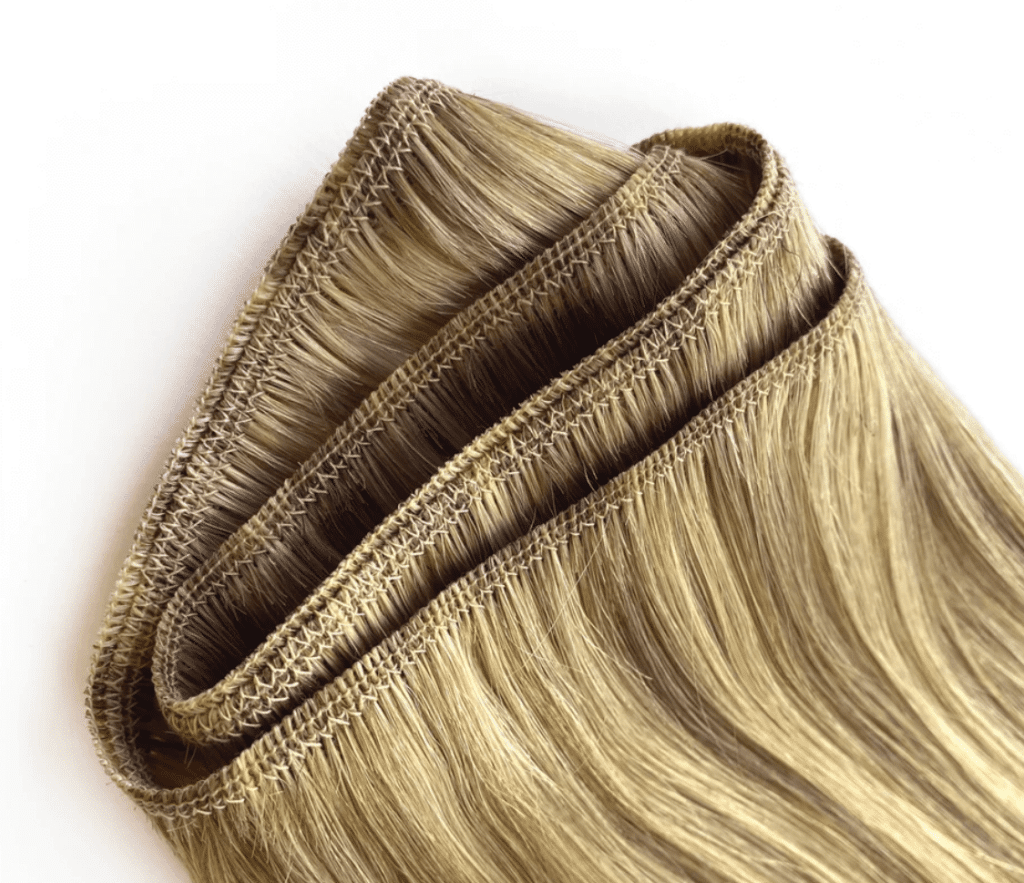
Hand-tied Wefts
Thin and lightweight. Never cut these—cutting breaks the hand-knotting, causing unraveling and shedding.

Genius Wefts
Modern hybrid of machine + hand-tied. Seam is thin and sealed. Can be trimmed freely without shedding.
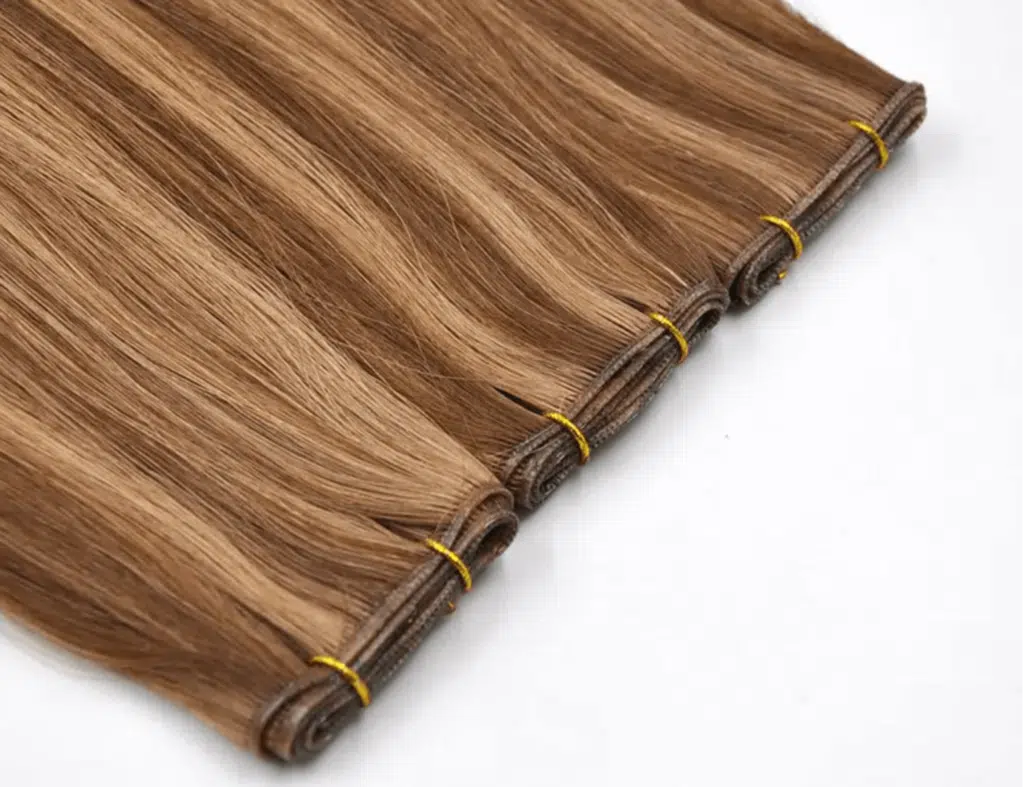
Flat Wefts
Pre-sealed, flexible, and thinner than regular machine wefts. Cut-resistant and perfect for customization.
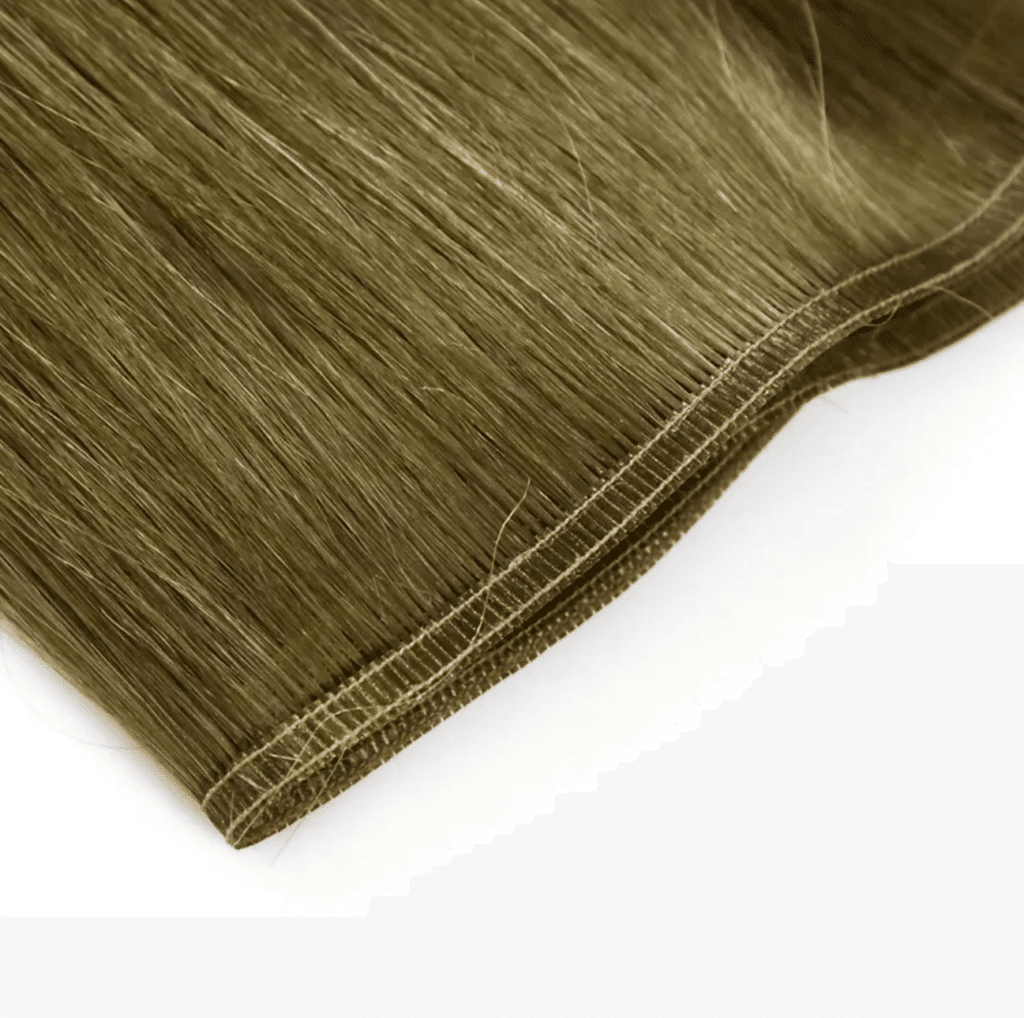
Butterfly Wefts
Feature pre-punched holes, reducing installation time. Though not designed to be cut, they can be trimmed between holes if necessary.
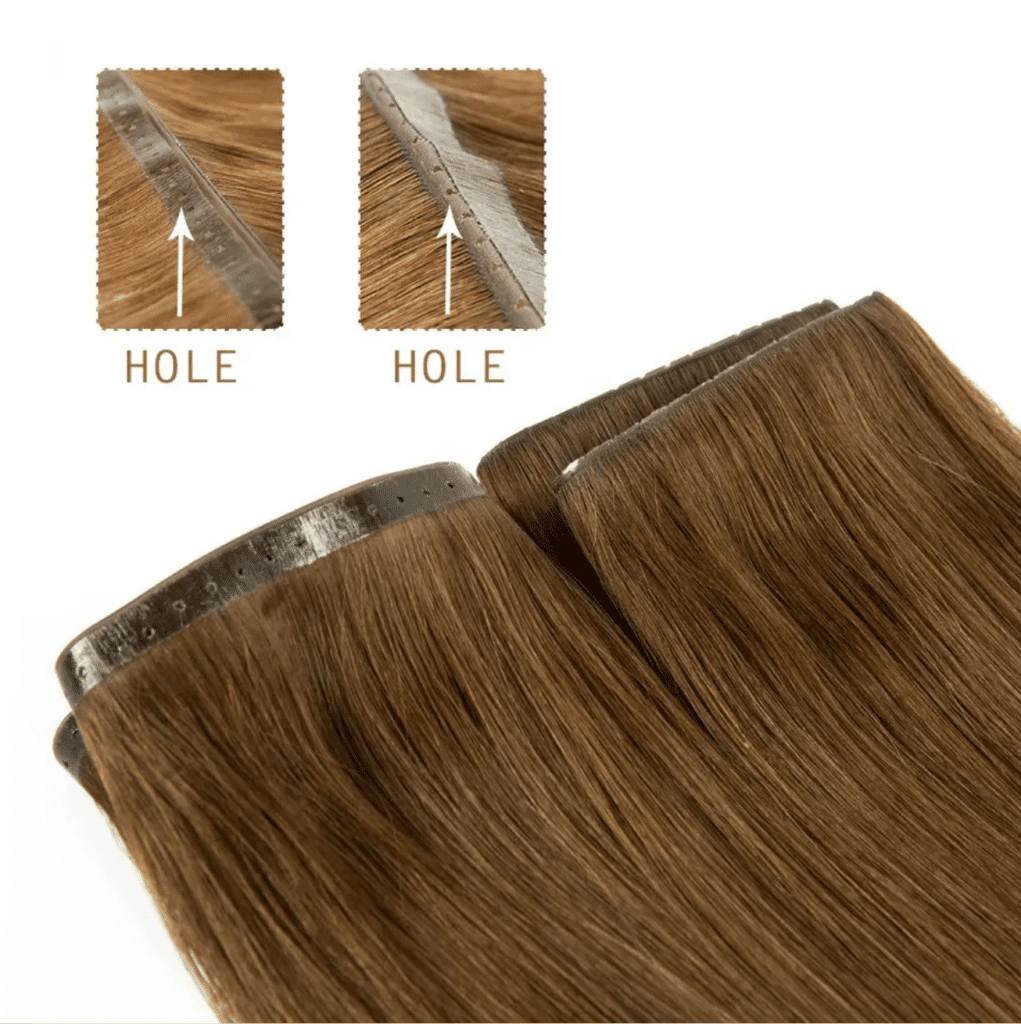
Invisible Tape Wefts
Pre-taped for quick install. But it can be cut to fit different head circumference.

Volume Genius Wefts
Engineered with multi-layer Genius structure. Safe to cut, thanks to bonded, return-hair-free design.
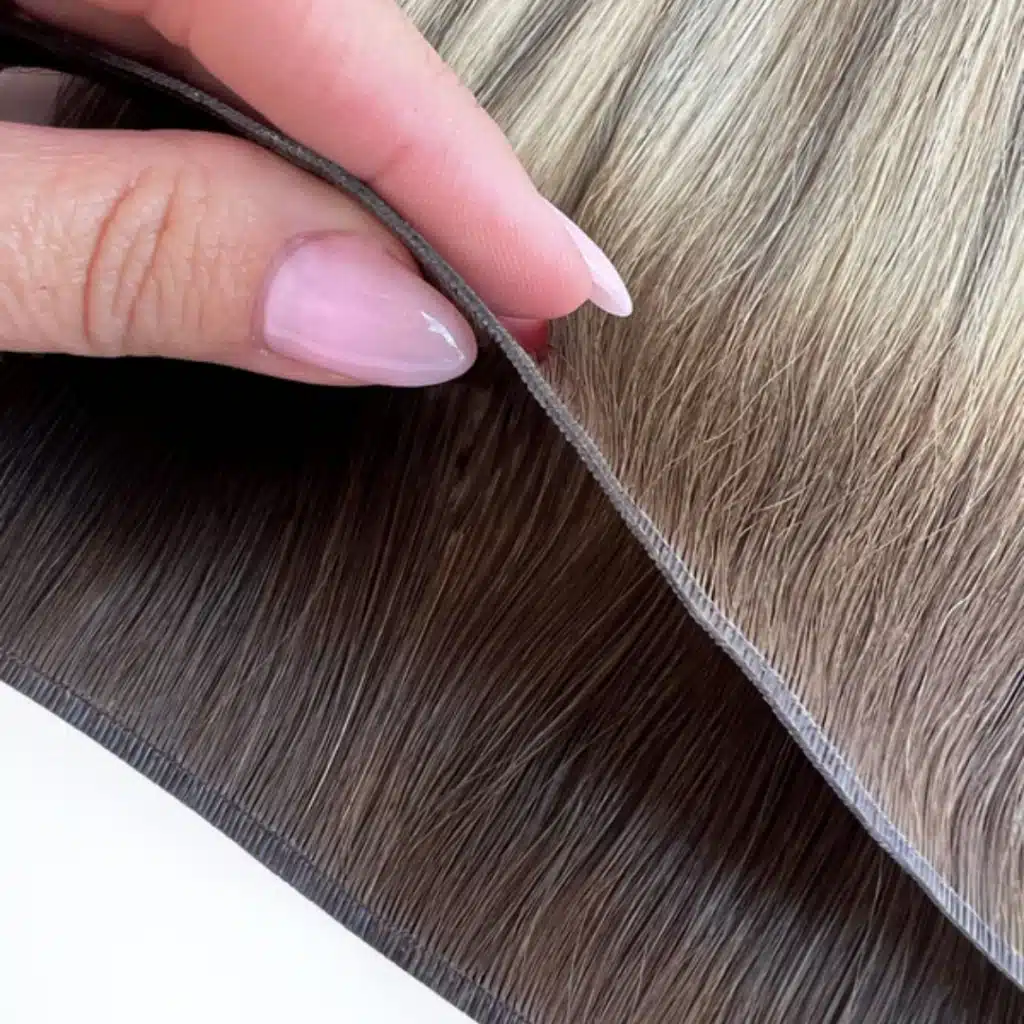
Long Tape Weft Extensions
Like Invisible Tape Wefts, it can be cut to fit different head circumference.
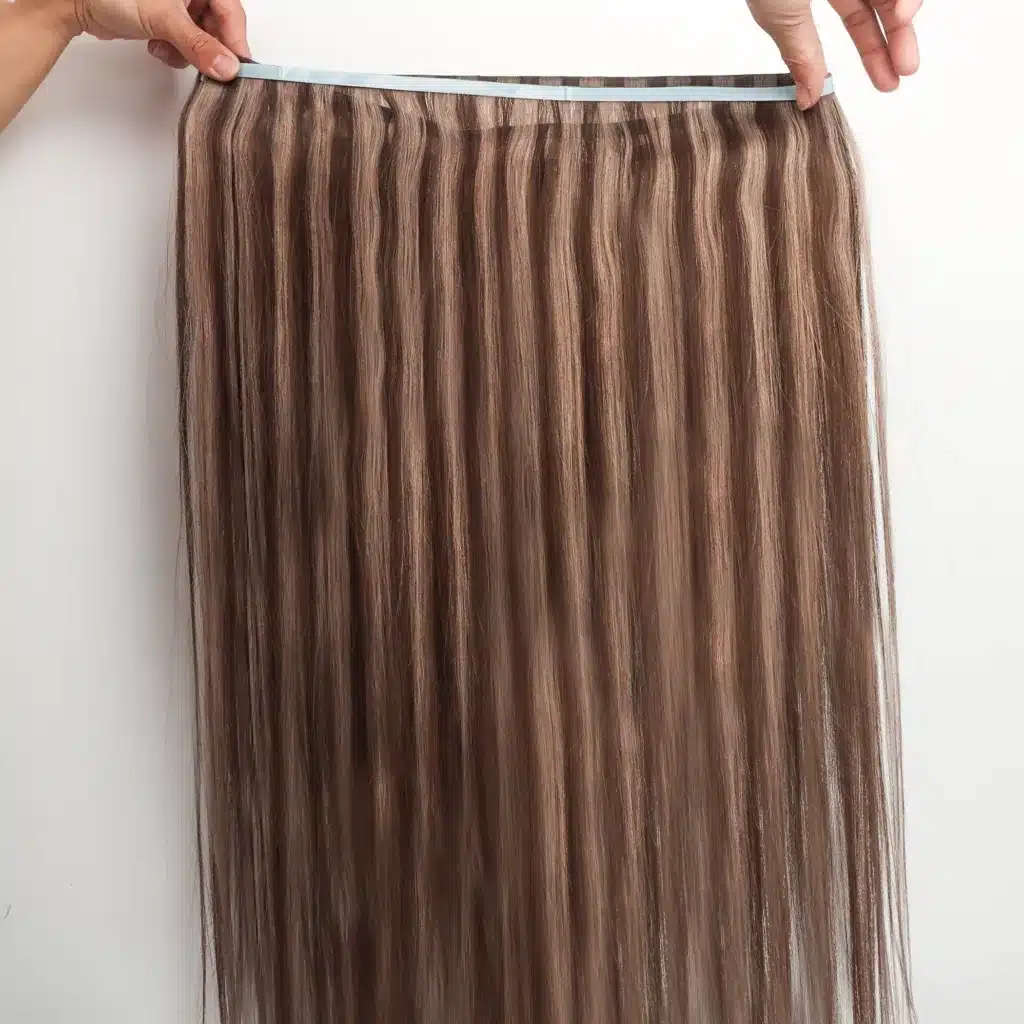
What Happens If You Cut a Hand-Tied Weft?
Tempted to trim that hand-tied weft to get a better fit? Don’t do it.
Cutting a hand-tied weft will break the knots and cause immediate shedding.
Hand-tied wefts are built using a continuous thread pattern that binds the hair together. Trimming it breaks this integrity.
Instead:
- Plan the install layout in advance.
- Use multiple narrow hand-tied strips.
- Fold or overlap ends rather than cut.
Stylists should work closely with vendors to order hand-tied wefts in the required widths.
What Is the Best Way to Cut Hair Extensions?
If the weft is cuttable, here’s how to do it professionally.
Step-by-Step: How to Cut Weft Extensions to Fit the Head
- Measure your client’s head precisely for each row.
- Mark the measured length using a water-soluble fabric pencil.
- Place the weft on a clean, flat surface to stabilize it during cutting.
- Use professional-grade, sharp shears or weft scissors.
- Cut cleanly in one firm motion. Avoid ragged or multiple cuts.
- Apply fabric glue or weft sealant to both edges immediately after cutting.
- Let the sealant dry fully before proceeding with the install.
Step-by-Step: How to Cut Hair Extensions to Blend With Natural Hair
- Have the client stand or sit upright to evaluate natural fall.
- Section the hair into layers for better visibility.
- Dry the hair completely before cutting.
- Use thinning shears or a razor comb for a feathered look.
- Point-cut vertically into the ends for a seamless blend.
- Check symmetry by comparing both sides in the mirror.
- Style the final blend to assess movement and adjust as needed.
Tips for Safe Customization
- Never use dull or kitchen scissors.
- Seal raw edges of machine wefts with glue or thread binding.
- Always cut on a clean, flat surface—not in-hand.
- Educate clients not to trim wefts at home.
- Avoid trimming wefts close to attachment points.
- Store leftover trimmed pieces in protective packaging for reuse.
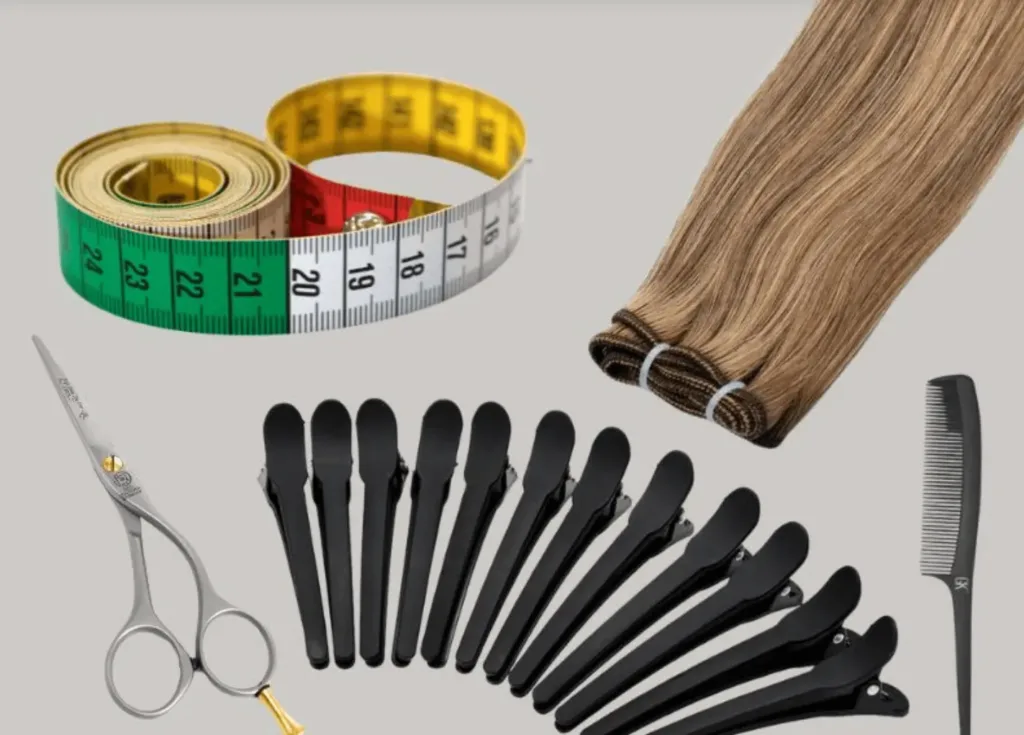
My Opinion
As a hair extension manufacturer and wholesaler, I work with salons worldwide. Most installation issues start from poorly trimmed or improperly handled wefts. That’s why we offer customizable Genius and flat wefts pre-engineered for cutting. I always recommend salons avoid hand-tied wefts if they plan to customize length—Genius Wefts are simply more adaptable.
FAQ
Q1: Can I cut my weft extensions at home?
A1: It’s better to have a stylist do it. Improper cuts can cause shedding.
Q2: Which wefts are safest to cut?
A2: Machine, Genius, and flat wefts are best for trimming.
Q3: What do I do if I accidentally cut a hand-tied weft?
A3: Use weft glue to seal the area or overlap it with another weft. Replacement is best.
Q4: Do I need to seal cut edges?
A4: Yes, unless the weft is pre-sealed like Genius or flat wefts.
Q5: Should I cut the weft before or after coloring?
A5: Cut before coloring to avoid bleeding at cut edges. Always seal them post-cutting.
Q6: Can I use a razor to cut the weft itself?
A6: No. Use only sharp scissors for the weft base. Use razors for length blending only.
Q7: How do I know if a weft is pre-sealed?
A9: Ask your supplier or gently inspect the edge. Pre-sealed wefts feel smooth and may have a thin polyurethane coating.
Q8: Can I stitch the edge after cutting instead of sealing it?
A10: Yes. Many professionals prefer whip-stitching with nylon thread for added security.
Q9: Can trimmed wefts be reused?
A11: Yes, as long as the ends are sealed or stitched properly and the weft is still in good condition.
Q10: How do I store leftover weft pieces?
A12: Store in breathable zip bags, away from heat and sunlight, ideally with a silica packet to control moisture.
Q11: Can I layer two different types of wefts together after cutting?
A13: Yes, but they should be similar in thickness and texture for a natural result. Always secure them evenly.
Conclusion
Cutting wefts the right way expands your styling flexibility without sacrificing longevity. Know your weft type—then cut with care.
where to buy weft hair extensions
Hibiscus Hair Manufacturer has been dedicated to producing high-quality weft hair extensions for 25 years and is a recognized leader in the industry. If you are interested in finding a reliable hair extensions supplier and wholesale for your brand, please visit our website for more information:
HAIR WEFT

